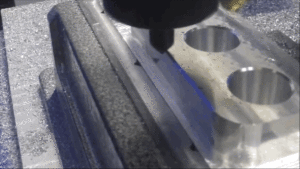Whatever happened to 3D printing?
 “We proved we could be very successful for early adopters, but when we tried to cross the chasm into the mainstream market, there were production and financial troubles we couldn’t solve on the capital timeline we had,” Cervantes said.
“We proved we could be very successful for early adopters, but when we tried to cross the chasm into the mainstream market, there were production and financial troubles we couldn’t solve on the capital timeline we had,” Cervantes said.
Dozens of 3D printer companies had cropped up with the intent of building beginner-friendly options.
At the end of 2015, 3D printing veteran 3D Systems ceased production of its easy-to-use Cube printer. Its competitor, Stratasys, announced layoffs for the second time in six months for its consumer-oriented MakerBot division.
Except, desktop manufacturing is still growing. Shoppers bought more than 275,000 desktop 3D printers in 2015, up from 160,000 in 2014, according to the 2016 Wohlers Report. In 2013, the market had just broken 80,000 units. While growth has slowed, it’s still moving fast.
So, who is still buying 3D printers and CNC machines? And will everyone else want one anytime soon?
Other Machine CEO Danielle Applestone mostly sees her customers using Othermills for prototyping.
The thing about prototyping with 3D printers is that the end product doesn’t have to look great. It’s a way to get a sense of scale and feel, but not usually expected to be buyer-ready. There are certainly exceptions to this.
So while Gerhardt said Studio Neat has never been compelled to upgrade from its relatively vintage MakerBot Replicator 2, consumers demand perfection. And that’s where the printers offered in the last five years still fall short.
“I think the hype surrounding 3D printing has waned — or is at least decreasing — because people realized it’s just a lot harder to design specific things than they thought,” Applestone said. “You can’t get around the fact that you have to learn (computer-aided design).”
The industry knows this and has focused on building big libraries. This leaves 3D printers focused on generic items like toys and decorations — not that specific IKEA drawer handle you broke and would like to replace. There’s no shortage of things to print, but the truly useful use cases are still reserved for experienced makers.
Most desktop 3D printers have a similar design. A metal nozzle moves along a gantry system as it lays down melted plastic on a flat bed. The best 3D printers take this basic design and make it bulletproof. They use high-quality parts and make them easy to swap out. The worst put low-quality, proprietary parts in a closed box.
Newer companies like New Matter are testing alternate options. The Mod-T moves its print bed around on two spinning rods, while the print head moves up and down. It’s an unusual design that simplifies how the printer works and allows the company to keep costs low.
Engineers are injecting new energy into the industry by rethinking 3D printing altogether. Lately, interest has risen in printers that use a laser or projected light to cure liquid plastic layer-by-layer. HP’s secretive printer also uses light to speed up the printing process and open new material possibilities.
Other 3D printer makers are diving into specific applications, such as carbon fiber and food to draw interest in their machines.
See the full story here: https://techcrunch.com/2016/07/10/whatever-happened-to-3d-printing/?ncid=tcdaily
Pages
- About Philip Lelyveld
- Mark and Addie Lelyveld Biographies
- Presentations and articles
- Tufts Alumni Bio